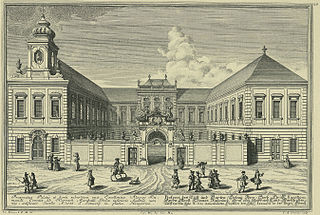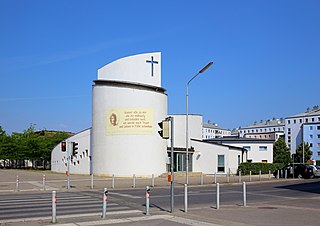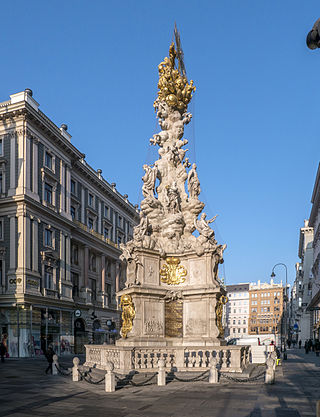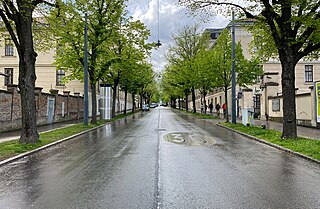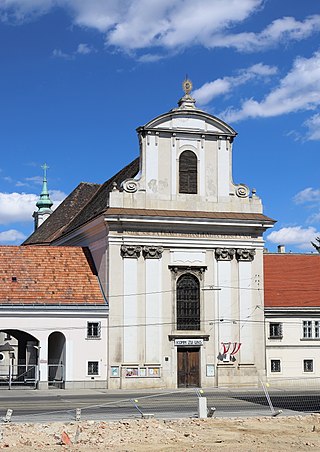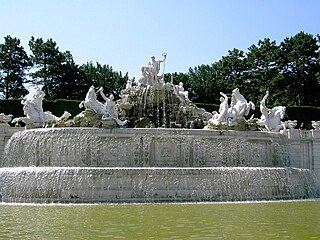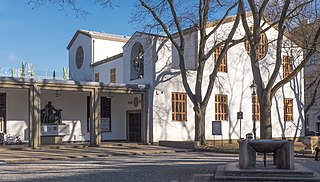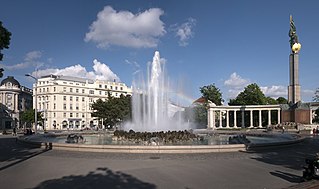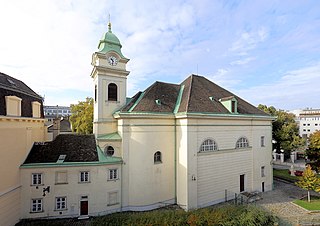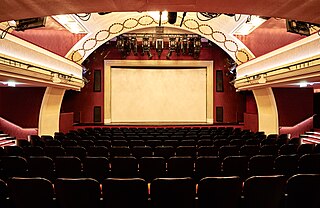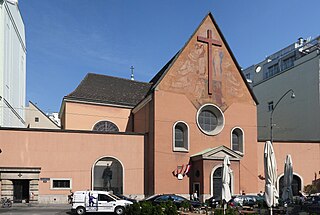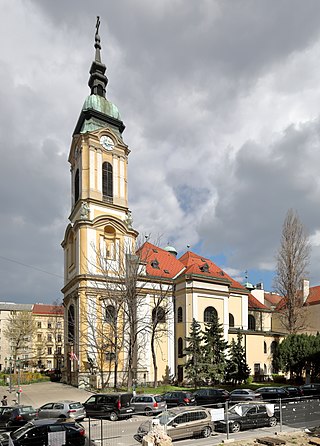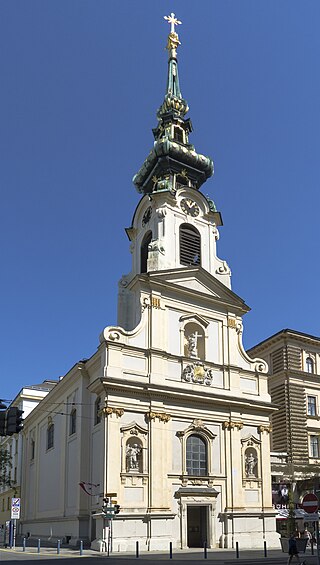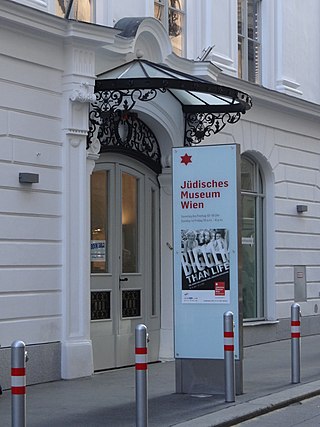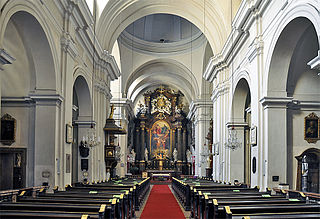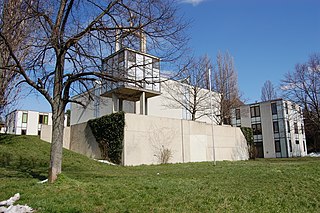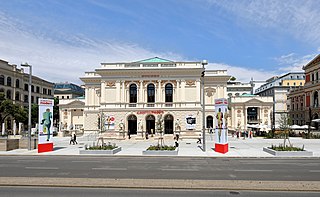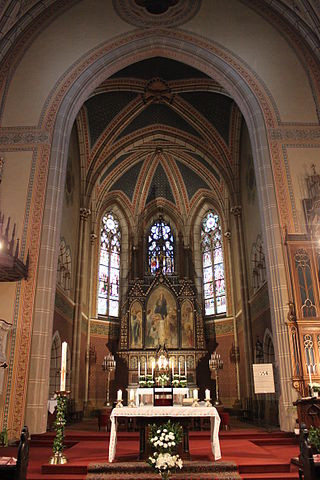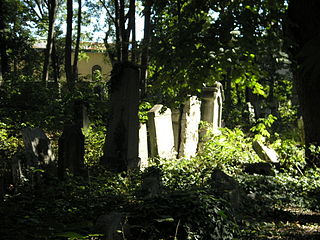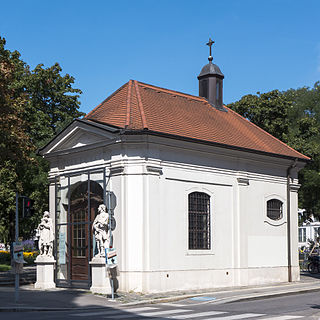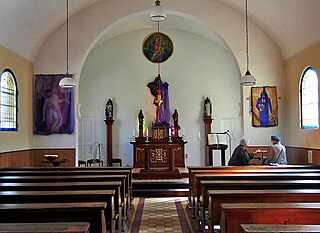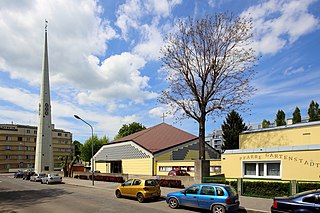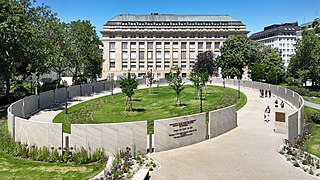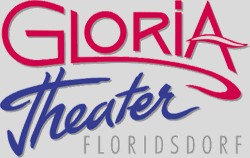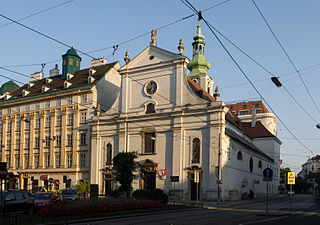100 Sights in Vienna, Austria (with Map and Images)
Legend
Premium Sights
Book tickets, guided tours and activities in Vienna.
Guided Free Walking Tours
Book free guided walking tours in Vienna.
Welcome to your journey through the most beautiful sights in Vienna, Austria! Whether you want to discover the city's historical treasures or experience its modern highlights, you'll find everything your heart desires here. Be inspired by our selection and plan your unforgettable adventure in Vienna. Dive into the diversity of this fascinating city and discover everything it has to offer.
Sightseeing Tours in ViennaActivities in ViennaThe Vienna Planetarium is considered one of the most modern planetariums in the world. It is located in Vienna's Prater. Together with the Kuffner and Urania Observatory, the planetarium is a specialised institution of the Viennese adult education centres.
The Wiener Riesenrad, or simply Riesenrad, is a 64.75-metre (212 ft) tall Ferris wheel at the entrance of the Prater amusement park in Leopoldstadt, the 2nd district of Austria's capital Vienna. It is one of Vienna's most popular tourist attractions, and symbolises the district as well as the city for many people. Constructed in 1897, it was the world's tallest extant Ferris wheel from 1920 until 1985.
The Haus der Musik in Vienna opened in 2000, and is the first museum of sound and music in Austria. Across an exhibition space of 54,000 sq. ft., a range of hi-tech interactive and multimedia presentations introduce the world of music, from the earliest human use of instruments to the music of the present day.
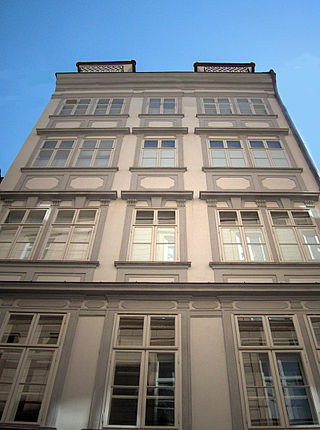
The Mozarthaus Vienna was Mozart's residence from 1784 to 1787. The building is located in Vienna's Old Town, not far from St. Stephen's Cathedral, and is his only surviving Viennese residence. It is now a museum.
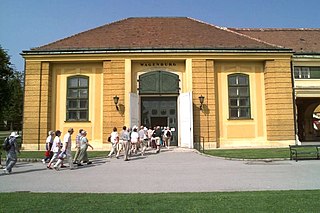
The Imperial Carriage Museum is a museum of carriages and vehicles used by the imperial household of the Holy Roman Empire, the Austrian Empire and Austria-Hungary. It is housed in the grounds of the Schloss Schönbrunn in the Hietzing district of Vienna and is a department of the Kunsthistorisches Museum.
Belvedere 21, formerly 21er Haus or Einundzwanziger Haus, is a modernist style steel and glass building designed by Austrian architect Karl Schwanzer (1918–1975). Originally constructed as the Austrian pavilion or temporary showroom for the Expo 58 in Brussels, it was later transferred to Vienna to house the Museum of the 20th Century, which explains why it was first nicknamed "20er Haus". Between 1979 and 2001, the building also acted as a depository for contemporary art works. From 2009 to 2011, it was remodeled by the architect Adolf Krischanitz and consequently renamed 21er Haus to reflect the 21st century. It was renamed Belvedere 21 in 2018.
7. Belvedere
The Belvedere is a historic building complex in Vienna, Austria, consisting of two Baroque palaces, the Orangery, and the Palace Stables. The buildings are set in a Baroque park landscape in the third district of the city, on the south-eastern edge of its centre. It currently houses the Belvedere museum known in German as the Österreichische Galerie Belvedere. The grounds are set on a gentle gradient and include decorative tiered fountains and cascades, Baroque sculptures, and majestic wrought iron gates. The Baroque palace complex was built as a summer residence for Prince Eugene of Savoy.
8. Vienna State Opera
The Vienna State Opera is a historic opera house and opera company based in Vienna, Austria. The 1,709-seat Renaissance Revival venue was the first major building on the Vienna Ring Road. It was built from 1861 to 1869 following plans by August Sicard von Sicardsburg and Eduard van der Nüll, and designs by Josef Hlávka. The opera house was inaugurated as the "Vienna Court Opera" in the presence of Emperor Franz Joseph I and Empress Elisabeth of Austria. It became known by its current name after the establishment of the First Austrian Republic in 1921. The Vienna State Opera is the successor of the old Vienna Court Opera. The new site was chosen and the construction paid by Emperor Franz Joseph in 1861.
9. Imperial Treasury
The Imperial Treasury at the Hofburg Palace in Vienna, Austria contains a valuable collection of secular and ecclesiastical treasures covering over a thousand years of European history. The entrance to the treasury is at the Schweizerhof, the oldest part of the palace, which was rebuilt in the sixteenth century in the Renaissance style under Holy Roman Emperor Ferdinand I. The Imperial Treasury is affiliated with the Kunsthistorisches Museum, and houses in 21 rooms a collection of rare treasures that were compiled by the Imperial House of Habsburg over the course of centuries, including the Imperial Crown, Orb, and Sceptre of Austria, and the Imperial Regalia of the Emperors and Kings of the Holy Roman Empire, including the Imperial Crown of the Holy Roman Empire.
The Esslingen parish church is located in the centre of Essling, a Viennese district in the 22nd district of Donaustadt. The Roman Catholic parish church, dedicated to St. Joseph of Nazareth, belongs to the City Deanery 22 in the Vicariate of Vienna, city of the Archdiocese of Vienna. The church is a listed building (list entry).
The Kalasantinerkirche St. Josef is a Roman Catholic parish church in the 14th district of Penzing in Vienna, Reinlgasse 25. It is dedicated to St. Joseph, the foster father of Jesus. The church and parish belong to the City Deanery 15 of the Archdiocese of Vienna.
The Spanish Riding School is an Austrian institution based in Vienna, dedicated to the preservation of classical dressage and the training of Lipizzaner horses, whose performances in the Hofburg are also a tourist attraction. The leading horses and riders of the school also periodically tour and perform worldwide. It is one of the "Big Four", the most prestigious classical riding academies in the world, alongside the Cadre Noir, the Portuguese School of Equestrian Art, and the Royal Andalusian School.
The Graben is one of the most famous squares in Vienna's first district, the city center. It begins at Stock-im-Eisen-Platz next to the Palais Equitable, and ends at the junction of Kohlmarkt and Tuchlauben. Another street in the first district is called Tiefer Graben. It is crossed by Wipplinger Straße by means of the Hohe Brücke, a bridge about 10 meters (33 ft) above street level.
Heldenplatz is a public space in front of the Hofburg Palace in Vienna, Austria. Located in the Innere Stadt borough, the President of Austria resides in the adjoining Hofburg wing, while the Federal Chancellery is on adjacent Ballhausplatz.
The Looshaus is a commercial and residential building at Michaelerplatz 3, between Herrengasse and Kohlmarkt, in Vienna. Designed by Adolf Loos and completed in 1912, it is considered a major building of Viennese Modernism.
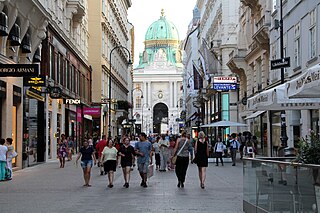
The Kohlmarkt is one of the most famous streets in the center of Vienna. It stretches from Michaelerplatz to the Graben and is considered Vienna's luxury shopping street due to a high density of jewelers and branches of international fashion labels. Together with the Graben and the Kärntner Straße, the Kohlmarkt forms Vienna's so-called "Golden U" of inner-city shopping streets, which offer upscale stores and are pedestrian zones.
The Albrechtsbrunnen, also known as the Danubiusbrunnen, is a fountain in the 1st district of Vienna, the inner city. It is located on the Augustinian Bastion and bears its name after Field Marshal Archduke Albrecht of Austria-Teschen, who lived in the building of today's Albertina on the Bastion, the Palais Erzherzog Albrecht, at that time.
18. Café Central
Café Central is a traditional Viennese café located at Herrengasse 14 in the Innere Stadt first district of Vienna, Austria. The café occupies the ground floor of the former Bank and Stockmarket Building, today called the Palais Ferstel after its architect Heinrich von Ferstel.
19. Albertina
The Albertina is a museum in the Innere Stadt of Vienna, Austria. It houses one of the largest and most important print rooms in the world with approximately 65,000 drawings and approximately 1 million old master prints, as well as more modern graphic works, photographs and architectural drawings. Apart from the graphics collection the museum has acquired, on permanent loan two significant collections of Impressionist and early 20th-century art, some of which are on permanent display. The museum also houses temporary exhibitions. The museum had 360,073 visitors in 2020, down 64 percent from 2019 due to the COVID-19 pandemic, but still ranked 55th in the List of most-visited art museums in the world.
20. Secession
The Secession Building is an exhibition hall in Vienna, Austria. It was completed in 1898 by Joseph Maria Olbrich as an architectural manifesto for the Vienna Secession, a group of rebel artists that seceded from the long-established fine art institution.
21. Vuk Stefanović Karadžić
Vuk Stefanović Karadžić was a Serbian philologist, anthropologist and linguist. He was one of the most important reformers of the modern Serbian language. For his collection and preservation of Serbian folktales, Encyclopædia Britannica labelled Karadžić "the father of Serbian folk-literature scholarship." He was also the author of the first Serbian dictionary in the new reformed language. In addition, he translated the New Testament into the reformed form of the Serbian spelling and language.
22. St. Othmar
The Roman Catholic parish church of St. Othmar unter den Weißgerbern is located in the 3rd district of Vienna Landstraße in the Weißgerberviertel on Kolonitzplatz. The parish lies in the city deanery 3 of the Vicariate of Vienna City, which belongs to the Archdiocese of Vienna. It was built between 1866 and 1873 in the neo-Gothic style according to plans by the architect Friedrich von Schmidt and is dedicated to St. Othmar. It is the successor church of three smaller churches and chapels.
Wikipedia: Pfarrkirche St. Othmar unter den Weißgerbern (DE), Website
23. Österreichs Trümmerfrauen
The Trümmerfrauen-Denkmal is a monument on a private property in Vienna, which is intended to commemorate the use of Trümmerfrauen in the reconstruction of the city, which was destroyed by Allied bombing raids, during and after the Second World War.
24. Japanischer Garten
Schönbrunn Palace was the main summer residence of the Habsburg rulers, located in Hietzing, the 13th district of Vienna. The name Schönbrunn has its roots in an artesian well from which water was consumed by the court.
25. Imperial Crypt
The Imperial Crypt, also called the Capuchin Crypt (Kapuzinergruft), is a burial chamber beneath the Capuchin Church and monastery in Vienna, Austria. It was founded in 1618 and dedicated in 1632, and located on the Neuer Markt square of the Innere Stadt, near the Hofburg Palace. Since 1633, the Imperial Crypt serves as the principal place of entombment for the members of the House of Habsburg. The bones of 145 Habsburg royalty, plus urns containing the hearts or cremated remains of four others, are here, including 12 emperors and 18 empresses. The visible 107 metal sarcophagi and five heart urns range in style from puritan plain to exuberant rococo. Some of the dozen resident Capuchin friars continue their customary role as the guardians and caretakers of the crypt, along with their other pastoral work in Vienna. The most recent entombment was in 2023.
26. Schweizertor
The Hofburg is the former principal imperial palace of the Habsburg dynasty in Austria. Located in the centre of Vienna, it was built in the 13th century and expanded several times afterwards. It also served as the imperial winter residence, as Schönbrunn Palace was the summer residence. Since 1946, it has been the official residence and workplace of the president of Austria.
27. Flakturm Augarten (Gefechtsturm)
The Vienna Flak Towers are six large defensive and protective structures made of reinforced concrete in Vienna, which were built in the years 1942 to 1945 as huge air raid shelters with mounted anti-aircraft guns and fire control systems. Such above-ground shelters are also called high-rise bunkers. The architect of the flak towers was Friedrich Tamms (1904–1980). In contrast to the Berlin and Hamburg flak towers, the Viennese flak towers have been preserved largely unchanged.
28. Tiergarten Schönbrunn
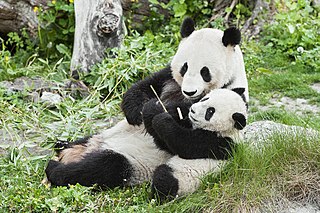
Schönbrunn Zoo is a 17-hectare (42-acre) zoo in the city of Vienna, Austria. Established in 1752, it is the world's oldest zoo still in operation. It is also a UNESCO World Heritage Site, being a part of the Schönbrunn Palace gardens. It generally receives more than 2 million visitors every year.
29. Karlskirche
The Rektoratskirche St. Karl Borromäus, commonly called the Karlskirche, is a Baroque church located on the south side of Karlsplatz in Vienna, Austria. Widely considered the most outstanding baroque church in Vienna, as well as one of the city's greatest buildings, the church is dedicated to Saint Charles Borromeo, one of the great counter-reformers of the sixteenth century.
30. ehem. Pfarrkirche Liesing St. Servatius
The parish church of Liesing is a Roman Catholic parish church in the 23rd district of Vienna and is located at Färbermühlgasse 6. The round church is the largest place of worship in the city deanery 23. The building, built between 1953 and 1955 according to plans by Robert Kramreiter, is dedicated to Mary, Mother of Divine Grace and the patron saint of the old church, St. Servatius. The bells of the parish church consist of four bells, which are located in the 38-metre-high tower set back from the church. The church is the parish church of the parish of Liesing, today part of the parish association "KaRoLieBe".
31. Austrian National Theatre
The Burgtheater (German: [ˈbʊʁk.teˌaːtɐ]; literally: "Castle Theater" but alternatively translated as " Court Theater", originally known as K.K. Theater an der Burg, then until 1918 as the K.K. Hofburgtheater, is the national theater of Austria in Vienna. It is the most important German-language theater and one of the most important theatres in the world. The Burgtheater was opened in 1741 and has become known as die Burg by the Viennese population; its theater company has created a traditional style and speech typical of Burgtheater performances.
32. Votivkirche
The Votivkirche is a neo-Gothic style church located on the Ringstraße in Vienna, Austria. Following the attempted assassination of Emperor Franz Joseph in 1853, the Emperor's brother Archduke Ferdinand Maximilian inaugurated a campaign to create a church to thank God for saving the Emperor's life. Funds for construction were solicited from throughout the Empire. The church was dedicated in 1879 on the silver anniversary of Emperor Franz Joseph and his wife Empress Elisabeth.
33. Friedhof der Namenlosen
The Cemetery of the Nameless is a cemetery of the homeless in the 11th district of Vienna, Simmering. It is located in the Albern district near the Albern harbor. Strictly speaking, there are two cemeteries, but only one of them can be recognized as such today.
34. Donauturm

The Donauturm is a tower in Vienna, the tallest structure in Austria at 252 metres (827 ft), and is the 68th tallest tower in the world. Opening in April 1964, the tower is located near the north bank of the Danube River in the district of Donaustadt.
35. Kirche Am Hof
The Kirche am Hof is a church built between 1386 and 1403 in Vienna. However, the main façade, which dominates the square, was not built until 1662. It is located on the east side of the Am Hof square in Vienna's 1st district, Innere Stadt.
36. Stadttempel
The Stadttempel, also called the Seitenstettengasse Temple, is an Orthodox Jewish synagogue, located at Seitenstettengasse 4, in the Innere Stadt 1st district of Vienna, Austria. Completed in 1826, it is the main synagogue in Vienna. The congregation worships in the Ashkenazi rite.
37. Pfarrkirche Neusimmering
The Roman Catholic parish church of Neusimmering is located in Vienna's 11th district of Simmering on Enkplatz and is a listed building. It was built between 1907 and 1910 according to designs by the architect Hans (Johann) Schneider in the neo-Romanesque style and is dedicated to Mary, Immaculate Conception. The parish of Neusimmering, which belongs to the parish church, is located in the city deanery 11 of the Vicariate of Vienna City, which belongs to the Archdiocese of Vienna. On April 1, 2018, the parish of Neusimmering was merged with the parishes of Hasenleiten and St. Lukas to form the parish of Divine Love. Since then, the parish church of Neusimmering has been the parish church of the parish of Divine Love.
38. Otto-Wagner-Kirche
Kirche am Steinhof, also called the Church of St. Leopold, is the Roman Catholic oratory of the Otto-Wagner-Spital in the area of Steinhof in Vienna, Austria. The building, designed by Otto Wagner, is considered one of the most important Art Nouveau churches in the world.
39. Wienerberg
The Wienerberg is a mountain ridge located at 244 m above sea level on the southern edge of Vienna. The area is part of the most populous municipal district, Favoriten. Since an urban planning ideas competition in the 1980s, the Wienerberg recreation area with a total area of 117 hectares has been located here, of which 90 hectares are protected and 16 hectares are water areas. The protected part has a diverse flora and fauna, including some of the species on the Red List, such as the great fire butterfly or the European pond turtle.
40. Austrian Museum of Applied Arts
The MAK – Museum of Applied Arts is an arts and crafts museum located at Stubenring 5 in Vienna's 1st district Innere Stadt. Besides its traditional orientation towards arts and crafts and design, the museum especially focuses on architecture and contemporary art. The museum has been at its current location since 1871. Since 2004 the building is illuminated in the evenings by the permanent outdoor installation "MAKlite" of American artist James Turrell. In 2015 the MAK became the first museum to use bitcoin to acquire art, when it purchased the screensaver "Event listeners" of van den Dorpel. With over 300,000 objects displayed online, the MAK presents the largest online collection within the Austrian Federal Museums. The audio guide to this museum is provided as a web-based app.
41. Donauinsel
The Donauinsel is a long, narrow artificial island in central Vienna, Austria, lying between the Danube river and the parallel excavated channel Neue Donau. The island is 21.1 km (13.1 mi) in length, but is only 70–210 m (230–689 ft) wide. It was constructed from 1972 to 1988 primarily as a measure for flood protection.
42. Augustinerkirche
The Augustinian Church in Vienna is a parish church located on Josefsplatz, next to the Hofburg, the winter palace of the Habsburg dynasty in Vienna. Originally built in the 14th century as the parish church of the imperial court of the Habsburgs, the harmonious Gothic interior was added in the 18th century. The official name of church and parish is St. Augustin, but it is locally called Augustinerkirche.
43. Holocaust-Mahnmal
The Judenplatz Holocaust Memorial also known as the Nameless Library stands in Judenplatz in the first district of Vienna. It is the central memorial for the Austrian victims of the Holocaust and was designed by British artist Rachel Whiteread.
44. Haus Wittgenstein
Haus Wittgenstein is a house in the modernist style on the Kundmanngasse, Vienna, Austria. It "shows remarkably similar characteristics in its obsession with detail and complete disregard for the requirements of the people who are expected to live within it." The house was commissioned by Margaret Stonborough-Wittgenstein, who asked the architect Paul Engelmann to design a townhouse for her. Stonborough-Wittgenstein invited her brother, the philosopher Ludwig Wittgenstein, to help with the design. In the end, he became more author than helper.
45. Michaelerkirche
Saint Michael's Church is one of the oldest churches in Vienna, Austria, and also one of its few remaining Romanesque buildings. Dedicated to the Archangel Michael, St. Michael's Church is located at Michaelerplatz across from St. Michael's Gate at the Hofburg Palace. St. Michael's used to be the parish church of the Imperial Court, when it was called Zum heiligen Michael.
46. Jubiläumswarte
The Jubiläumswarte is a lookout tower on the Gallitzinberg on the western outskirts of Vienna. It is located at Johann-Staud-Straße 80 on the Vogeltennwiese in Vienna's 16th district of Ottakring at 449 metres above sea level. The viewing platform of the Jubiläumswarte is 31 m above ground at a height of 480 m and is freely accessible via an external spiral staircase. However, in the event of ice or snow, access is blocked.
47. Donnerbrunnen
Donnerbrunnen ist der volkstümliche Name für den von Georg Raphael Donner gestalteten und von 1737 bis 1739 errichteten Providentiabrunnen auf dem Neuen Markt im 1. Wiener Gemeindebezirk Innere Stadt. Die Wiener konnten mit dem Begriff providentia jedoch wenig anfangen, weshalb sie ihn nach seinem Erbauer benannten. Kunsthistorisch ist öfter auch vom Mehlmarktbrunnen die Rede, da der Neue Markt im 18. Jahrhundert noch Mehlmarkt hieß. Beim Bau einer Tiefgarage wurde der Brunnen 2018 bis 2022 temporär abgetragen.
48. Brigittakapelle
The Brigitta Chapel is a former Roman Catholic chapel built in the Baroque style in Vienna's 20th district of Brigittenau and is a listed building. It is used by the Georgian Orthodox community for masses, and it functions as the church of St. David the Renewer.
49. Maria Theresa Barracks
The Maria Theresa Barracks is a barracks of the Austrian Armed Forces in the 13th district of Vienna, Hietzing. It is located in the Schönbrunn district on the south side of the Schönbrunn Palace Park in the so-called Fasangarten.
50. Altlerchenfelder Kirche
The Altlerchenfelder Pfarrkirche zu den Sieben Zufluchten is a Roman Catholic parish church in the Altlerchenfeld district of the 7th district of Vienna, Neubau, Lerchenfelder Straße 111. It is interesting from an art-historical point of view in that it forms a kind of transitional work between classicism and historicism in architecture. In particular, the church building in its combination of architecture and painting is considered an example of a total work of art in the sense of the Romantic conception of art and one of the main works of historicism in Vienna's architecture. The patronage is the Seven Refuges.
51. Red Army Memorial
The Soviet War Memorial in Vienna, Austria, more formally known as the Heroes' Monument of the Red Army, is located at Vienna's Schwarzenbergplatz. The semi-circular white marble colonnade partially enclosing a twelve-metre figure of a Soviet soldier was unveiled in 1945. The Heroes' Monument of the Red Army of the Soviet Union in Vienna was built to commemorate the 17,000 Red Army soldiers killed in action during the Vienna offensive in World War II.
52. Stiftskaserne
The Stiftkasernne, officially Stiftkaserne General Spannocchi, named after the officer Emil Spannocchi, also Amtsgebäude Stiftgasse General Spannocchi, in the 7th district of Vienna, Neubau, is a military building in Vienna. It is located in Stiftgasse 2 – 2a, a side street of Mariahilfer Straße. On the initiative of Defence Minister Thomas Starlinger, the name was named after Emil Spannocchi on 27 January 2020.
53. Dialog im Dunkeln
Dialogue in the Dark is an awareness raising exhibition and franchise, as well as a social business. In Dialogue in the Dark, blind guides lead visitors in small groups through different settings in absolute darkness. Through this visitors learn how to interact without sight by using their other senses, as well as experience what it is like to be blind. The exhibition is organized as a social franchising company, which offers the exhibition as well as business workshops, and has created jobs for the blind, disabled, and disadvantaged worldwide. The exhibition aims to change mindsets on disability and diversity, and increase tolerance for “otherness”. More than 9 million visitors have gone through an experience in the Dark and thousands of blind guides and facilitators find employment through exhibitions and workshops.
54. Volksoper
The Vienna Volksoper is an opera house in Vienna, Austria. It produces three hundred performances of twenty-five German language productions of opera, operetta, musicals, and ballet, during an annual season which runs from September through June.
55. Palais Liechtenstein (Gartenpalais)
The Gartenpalais Liechtenstein is a baroque palace on Fürstengasse in Vienna's 9th district, Alsergrund. There is a park between the palace, which housed the Liechtenstein Museum until the end of 2011, and the "Alserbachpalais", which was originally designed as a belvedere. Since the beginning of 2012, the Liechtenstein Garden Palace has been available as a venue for events. Part of the private art collection of the Prince of Liechtenstein is still located in the gallery rooms of the palace. In 2010, in order to avoid confusion in the future, the palace began to be officially referred to as the Garden Palace, as the Liechtenstein City Palace in Vienna's old town had been renovated by 2013 and then also equipped with part of the Liechtenstein art collection.
Wikipedia: Palais Liechtenstein (Fürstengasse) (DE), Website
56. Leopold Museum
The Leopold Museum, housed in the Museumsquartier in Vienna, Austria, is home to one of the largest collections of modern Austrian art, featuring artists such as Egon Schiele, Gustav Klimt, Oskar Kokoschka, and Richard Gerstl.
57. Kabarett Simpl
The Simpl is a cabaret in Vienna-Innere Stadt, which opened in 1912 as the beer cabaret Simplicissimus. In the 1920s and 30s, he produced cabaret greats such as Fritz Grünbaum and Karl Farkas. The name, lettering and the red bulldog refer to the Munich satirical magazine Simplicissimus, founded in 1896.
58. Wasserturm Favoriten
The Favoriten water tower is a landmark of Vienna's 10th district, Favoriten. The striking building in the style of industrial historicism is located on the top of the Wienerberg, Windtenstraße 3 and is visible from afar from the south.
59. Schubertpark
Schubertpark is a park in Vienna's 18th district, Währing, which was opened in 1925 on the site of the abandoned Währing local cemetery. A grove of graves shows tombstones of celebrities once buried here.
60. Familienkirche
The Neuottakringer Church, the Roman Catholic parish church "Zur Heiligen Familie" in Vienna, was built in the years 1894 to 1898 under the protectorate of the Reichsrat member Prince Aloys of Liechtenstein. It is located in Vienna's 16th district of Ottakring between Wattgasse, Degengasse, Rückertgasse and Arnethgasse on Familienplatz.
61. Christ Church Vienna

The Anglican church of Christ Church, Vienna is located in central Vienna, Jaurèsgasse 17-19, off the Rennweg. Worship services are held in English on Sundays and Wednesdays. On the first Sunday of the month there is a service of Evensong.
62. Kathedrale zum heiligen Nikolaus
The Russian Orthodox Cathedral of St. Nicholas is a late historicist church in the 3rd district of Vienna, Jaurèsgasse 2. It is the seat of the Russian Orthodox community of Vienna and has been an eparchy since 1962.
Wikipedia: Russisch-orthodoxe Kathedrale (Wien) (DE), Website
63. Schottenkirche
The Schottenkirche is a parish church in Vienna attached to the Schottenstift, founded by Irish Benedictine monks in the 12th century. In 1418, the Duke Albert V of Austria transferred it to the German-speaking Benedictine monks from the Melk Abbey during the Melker Reform initiated after the Council of Constance. The church was elevated to the rank of Basilica Minor in 1958.
64. Kirche Maria am Gestade
Maria am Gestade is a Gothic church in Vienna, Austria. One of the oldest churches in the city—along with St. Peter's Church and St. Rupert's Church—it is one of the few surviving examples of Gothic architecture in Vienna. Located in the Innere Stadt at Salvatorgasse 12, near the Donaukanal, the church was traditionally used by sailors on the Danube river. The name reflects the former location on the Fluvial terrace of an arm of the Danube river, prior to its regulation.Due to the stairs surrounding the church it got the popular name Maria Stiegen.
65. St. Barbara
The Barbara Church is the main church of the Greek Catholic Church in Austria, as well as the parish church of the Ukrainian Uniate Parish, a German-speaking Greek Catholic parish and central parish church for the other Byzantine believers in Austria. It is located in Postgasse in Vienna's 1st district, Innere Stadt.
66. Johanneskirche
The Church of St. John in Unterlaa (Johanneskirche) is a Roman Catholic church in the Unterlaa district of Vienna, in the 10th district of Favoriten. It is considered one of the oldest churches in today's Vienna, as the high medieval components could date back at least to the first third of the 11th century. St. Johann zu Unterlaa is a branch church of the parish church of Oberlaa.
67. Saint Josef - Weinhaus
The parish church of St. Josef-Weinhaus is a Roman Catholic parish church dedicated to St. Joseph in the Weinhaus district of the 18th district of Währing, Gentzgasse 142. It was founded in the 1880s, merged with the congregation of the family church in Carolusheim in January 2022 to form the parish of Vienna Währing and belongs to the Archdiocese of Vienna. The church building is a listed building.
68. Dominikanerkirche
The Dominican Church, also known as the Church of St. Maria Rotunda, is an early Baroque parish church and minor basilica in the historic center of Vienna, Austria. It is the third church built on the same site in the course of time.
69. George-Washington-Hof
The George-Washington-Hof is a sprawling, listed municipal building at Triester Straße 52 in Vienna's 10th district, Favoriten, and at Wienerbergstraße in the 10th and 12th districts, Meidling. The building is a listed building and it is defined as a structural protection zone by the City of Vienna in both districts.
70. Jesuitenkirche (St. Ignatius)
The Jesuit Church, also known as the University Church, is a two-floor, double-tower church in Vienna, Austria. Influenced by early Baroque principles, the church was remodeled by Andrea Pozzo between 1703 and 1705. The Jesuit Church is located on Dr. Ignaz Seipel-Platz, immediately adjacent to the old University of Vienna buildings.
71. Odeon-Theater
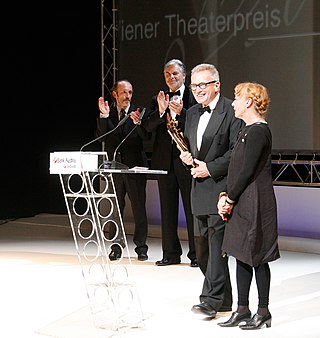
The Serapionstheater is an Austrian theatre group founded in 1973 by Ulrike Kaufmann and Erwin Piplits. Since 2014, Max Kaufmann has been the artistic director of the Serapions Ensemble, as well as the chairman of the Odeon Association.
72. Januariskapelle
The (garden) Palais Harrach was located in Ungargasse, today's serial numbers 67a−69, in the Viennese suburb of Landstraße, part of the 3rd district since 1850, on the site where the Ungargasse School Center (SZU) stands today. The very large property reached as far as Juchgasse, Boerhaavegasse and Barmherzigengasse.
73. Pfarre St. Benedikt
The parish church of St. Benedikt am Leberberg is a Roman Catholic parish church on the Leberberg in the 11th district of Simmering. The parish is located in Deanery 11 of the Vicariate Vienna City belonging to the Archdiocese of Vienna. It was built in 1996 and 1997 and was consecrated to St. Benedict. It is currently the youngest parish church in the Archdiocese of Vienna.
74. Holy Trinity Column
The Plague Column, or Trinity Column, is a Holy Trinity column located on the Graben, a street in the inner city of Vienna, Austria. Erected after the Great Plague epidemic in 1679, the Baroque memorial is one of the best known and most prominent sculptural artworks in the city. Christine M. Boeckl, author of Images of Plague and Pestilence, calls it "one of the most ambitious and innovative sculptural ensembles created anywhere in Europe in the post-Bernini era."
75. Esperanto Museum and Collection of Planned Languages
The Esperanto Museum and Collection of Planned Languages, commonly known as the Esperanto Museum, is a museum for Esperanto and other constructed languages in Vienna, Austria. It was founded in 1927 by Hofrat Hugo Steiner and was incorporated into the Austrian National Library as an independent collection in 1928. Today, it is a museum, library, documentation center, and archive. It accommodates the largest collection of constructed languages in the world and a linguistic research library for language planning. Its catalogue is available online.
Wikipedia: Esperanto Museum and Collection of Planned Languages (EN), Website
76. Biedermann-Huth-Raschke-Kaserne
The Breitensee Kaserne, originally Kaiser-Franz-Joseph-Kavallerie-Kaserne, is located in the Breitensee district in Penzing, 14th Vienna municipal district since 1938. It consists of two components separated by Breitenseer Straße, which have had different names since 1967. A complete cavalry regiment could be accommodated in the barracks.
77. Maria Geburt
The parish church of the Nativity of Mary is a Roman Catholic church in the 3rd district of Vienna, Landstraße near Rennweg 91. Since 1 October 2017, the parish church of the Nativity of the Virgin Mary has been the parish church of the parish of Maria-Drei-Kirchen in the City Deanery 3 in the Vicariate of Vienna, city of the Archdiocese of Vienna. The church is a listed building (list entry). It was the church of the former orphanage on Rennweg, from which its common name Waisenhauskirche originates.
78. Neptune Fountain
The Neptune Fountain in the Schönbrunn Palace Park was built between 1778 and 1780 as part of the redesign of the complex under Empress Maria Theresa. The fountain is a good hundred meters long, almost fifty meters wide and a little over seven meters high without figures.
79. Neufünfhauser Pfarr- und Gedächtniskirche Christus König
The Christ the King Church, also known as the Seipel-Dollfuß Memorial Church, is a Roman Catholic church in the 15th district of Vienna. From 1935 to 2016, it served as the parish church of the parish of Neufünfhaus and was called the "Neufünfhausen Parish and Memorial Church of Christ the King" during this time. On 1 January 2017, the parish of Neufünfhaus was merged with the parishes of Rudolfsheim and Schönbrunn-Vorpark to form the new parish of Hildegard Burjan. Since then, the Church of Christ the King has been a branch church of the parish of Hildegard Burjan.
80. Hochstrahlbrunnen
The Hochstrahlbrunnen is a fountain in Vienna, Germany. It is located on Schwarzenbergplatz and was put into operation on 24 October 1873 in the presence of Emperor Franz Joseph I on the occasion of the completion of the First Vienna High Spring Water Pipeline after a construction period of four months. Prince Johann Adolf II zu Schwarzenberg had agreed to the construction of the fountain in September 1872 and requested that the "discharge of the water quantity" should serve "to irrigate the existing facilities dedicated to public pleasure".
81. St. Peter und Paul
The parish church Erdberg is a Roman Catholic parish church in the Erdberg district of Vienna's 3rd district of Landstraße. In the vernacular, the church is also called the Alt-Erdberg parish church to better differentiate it from the parish church of Neuerdberg. The parish is located in Deanery 3 of the Vicariate of Vienna City, which belongs to the Archdiocese of Vienna. It was built between 1700 and 1723 in the Baroque-Classicist style and is dedicated to Saints Peter and Paul. The building is a listed building.
82. Kammerspiele
The Kammerspiele der Josefstadt is a theatre in the 1st district of Vienna, Innere Stadt, in the Steyrerhof, a side street of Rotenturmstraße. Today, the Kammerspiele is run as the "branch stage" of the Theater in der Josefstadt and is dedicated to the cultivated boulevard play with a focus on classic entertainment literature. They always retained their attraction from popular actors, often known from film and television, such as Senta Berger, Johannes Heesters, Georg Kreisler, Hans Moser, Fritz Muliar, Susi Nicoletti, Georg Thomalla, Helmut Qualtinger and Otto Schenk.
83. Stadtpark-Kinderpark
The Stadtpark in Vienna, Austria is a large municipal park that extends from the Ringstraße in the Innere Stadt first district up to the Heumarkt in the Landstraße third district. The park is divided in two sections by the Wienfluss, and has a total surface area of 65,000 square metres. Scattered throughout the park are statues of famous Viennese artists, writers, and composers, including Hans Canon, Emil Jakob Schindler, Johann Strauss II, Franz Schubert, and Anton Bruckner. The opulent Kursalon building on Johannesgasse, with its broad terrace that reaches into the park, is the site of popular waltz concerts.
84. Kapuzinerkirche
The Capuchin Church in Vienna, Austria, is a Roman Catholic church and monastery run by the Order of Friars Minor Capuchin. Located on the Neuer Markt square in the Innere Stadt near the Hofburg Palace, the Capuchin Church is most famous for containing the Imperial Crypt, the final resting place for members of the House of Habsburg. The official name is the Church of Saint Mary of the Angels.
85. St. Leopold
The parish church of St. Leopold is a Roman Catholic parish church in the 2nd district of Vienna, Leopoldstadt, at Alexander-Poch-Platz 6. The parish is located in the deanery 2/20 of the Vicariate of Vienna City, which belongs to the Archdiocese of Vienna. It is dedicated to St. Leopold. The building is a listed building.
86. Stiftskirche
The collegiate church "Zum heiligen Kreuz" is located at Mariahilfer Straße 24 in Vienna's 7th district Neubau, is part of the Stiftkaserne and has been the Roman Catholic Garrison Church of Vienna since 1921.
87. Jewish Museum Vienna
The Jüdisches Museum Wien, trading as Jüdisches Museum der Stadt Wien GmbH or the Jewish Museum Vienna, is a museum of Jewish history, life and religion in Austria. The museum is present on two locations, in the Palais Eskeles in the Dorotheergasse and in the Judenplatz, and has distinguished itself by a very active programme of exhibitions and outreach events highlighting the past and present of Jewish culture in Austria. The current director is Barbara Staudinger and the chief curator is Astrid Peterle.
88. Dreifaltigkeitskirche
The Holy Trinity Church of the Minorites in Vienna, popularly known as the Zu den Weißspaniern and today the Alserkirche, but also known as the Trinitarian Church, is the Roman Catholic parish church of the Alservorstadt district in Vienna's 8th district of Josefstadt. The Minorite monastery in Vienna is closely connected to the church. Both are listed as historical monuments.
89. St. Laurentius
The Roman Catholic parish church of Breitensee is located in the 14th district of Penzing in the district of Breitensee on Laurentiusplatz. The parish is located in the city deanery 14 of the Vicariate of Vienna City, which belongs to the Archdiocese of Vienna. It was dedicated to Emperor Franz Joseph I on the occasion of his 50th anniversary of reign and is dedicated to St. Lawrence. The church is a listed building (list entry).
90. Zu den vier heiligen Evangelisten
The Roman Catholic church in Oberbaumgarten, also known as the pastoral care centre at Baumgartner Spitz, is dedicated to the four holy evangelists. The parish belongs to the City Deanery 14 of the Archdiocese of Vienna. Since 1 July 2019, Oberbaumgarten, together with the parish of St. Anna Baumgarten, has belonged to the parish of Saint Mother Teresa. The church "Zu den vier heiligen Evangelisten" is a subsidiary church of this parish. A chapel in the Steinhof also belongs to the district.
91. Künstlerhaus Wien
The Künstlerhaus in Vienna's 1st district has accommodated the Künstlerhaus Vereinigung since 1868. It is located in the Ringstrassenzone in between Akademiestraße, Bösendorferstraße and Musikvereinsplatz.
92. Rudolfsheimer Pfarrkirche Maria Königin der Märtyrer
The Rudolfsheim parish church is a Roman Catholic parish church and is located in the 15th district of Vienna Rudolfsheim-Fünfhaus on Kardinal-Rauscher-Platz. It is dedicated to the name of Mary, the Queen of Martyrs. The Rudolfsheim parish church has been the parish church of the parish of Hildegard Burjan since 2017.
93. Jüdischer Friedhof Währing
The Jewish Cemetery in Währing, opened in 1784, was the main burial site for members of the Israelitische Kultusgemeinde Wien. Besides the St. Marx Cemetery it is the last remaining cemetery of Vienna in the Biedermeier style. After its closure in the 1880s, it was partially destroyed during the time of the Third Reich, and is now only partly accessible due to its deteriorating condition. A long-running debate over the restoration of the cemetery has been taking place since 2006 between politicians of the federal and local levels as well as experts.
94. Hundsturmer Linienkapelle
The Hundsturm Chapel is a Roman Catholic, former line chapel in the 5th district of Vienna, Margareten, on the corner of Schönbrunner Straße and St.-Johann-Gasse, on the edge of the Bruno-Kreisky-Park, and belongs to the parish church of St. Josef zu Margareten. It is one of the few line chapels in Vienna that still exists today.
95. Maria Grün
The Maria Grün pilgrimage church is a Roman Catholic pilgrimage church in the Prater in Vienna's 2nd district of Leopoldstadt. The church is a branch church of the parish of Donaustadt and is located in the deanery 2/20 of the Vicariate of Vienna City, which belongs to the Archdiocese of Vienna. It is dedicated to St. Mary.
96. Pfarrkirche Gartenstadt
The parish church Gartenstadt is a Roman Catholic parish church in the district of Gartenstadt in the district of Neujedlersdorf in the 21st district of Vienna. The parish is located in the City Deanery 21 of the Vicariate of Vienna City, which belongs to the Archdiocese of Vienna. It is dedicated to the blood of Christ.
97. Memorial to the Jewish Children, Women and Men of Austria who were murdered in the Shoah
Memorial for the Jewish Children, Women and Men from Austria Murdered in the Shoah (Shoah Name Walls) is the name of a memorial of the Republic of Austria for the 65,000 Jewish Austrians who were murdered in the course of the Shoah. Engraved are the names of all Austrian victims of the Shoah. The location is Ostarrichipark in Vienna's 9th district, Alsergrund. In English, the memorial is called Memorial to the Jewish Children, Women and Men of Austria who were murdered in the Shoah.
Wikipedia: Gedenkstätte für die in der Shoah ermordeten Jüdischen Kinder, Frauen und Männer aus Österreich (DE), Website
98. Gloria Theater
The Gloria Theatre is a private theatre in Vienna's 21st district of Floridsdorf, where other art forms are taught in addition to entertainment theatre. The programme primarily includes comedies, tabloid plays and singspiels.
99. Paulanerkirche
The Roman Catholic Church of the Holy Guardian Angels, popularly known as the Paulaner Church, located in Vienna's 4th district of Wieden, stands on Irene-Harand-Platz at the junction of Favoritenstraße and Wiedner Hauptstraße. As a branch church, it belongs to the parish of the Good News in the city deanery 4/5 in the Vicariate of Vienna, city of the Archdiocese of Vienna. The church is a listed building.
100. Theater in der Josefstadt
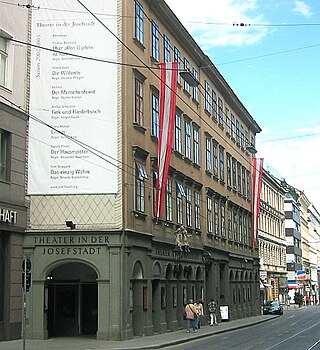
The Theater in der Josefstadt is a theater in Vienna in the eighth district of Josefstadt. It was founded in 1788 and is the oldest still performing theater in Vienna. It is often referred to colloquially as simply Die Josefstadt.
Share
Disclaimer Please be aware of your surroundings and do not enter private property. We are not liable for any damages that occur during the tours.
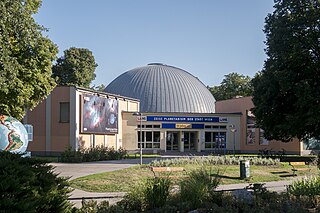

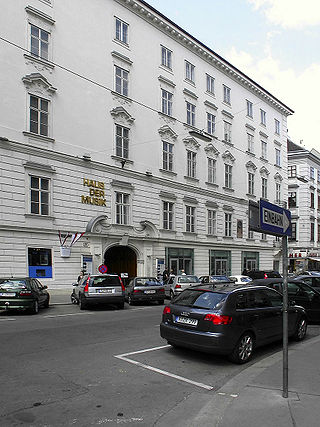

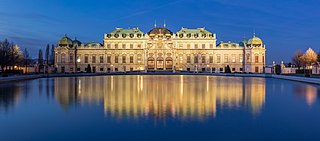
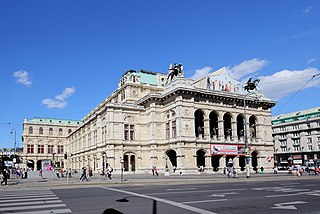


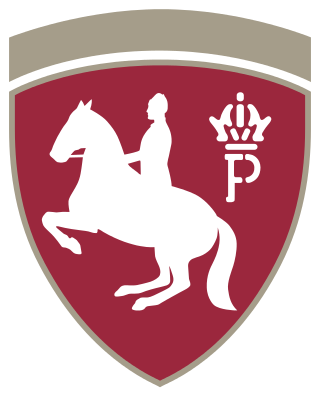
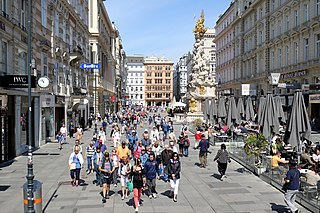
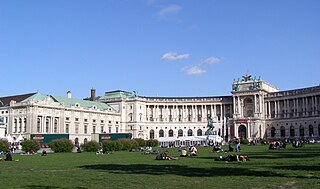
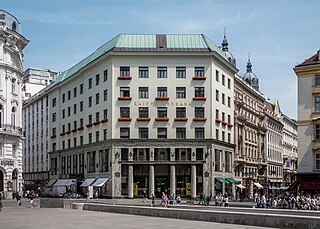
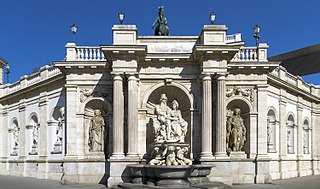
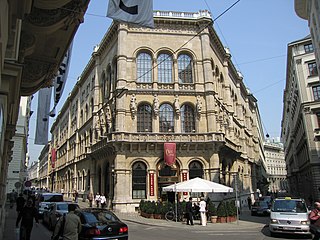
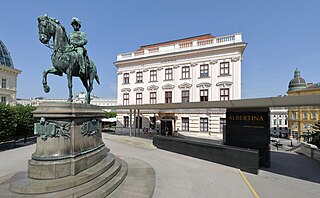
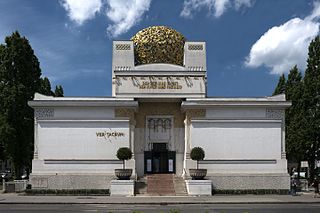
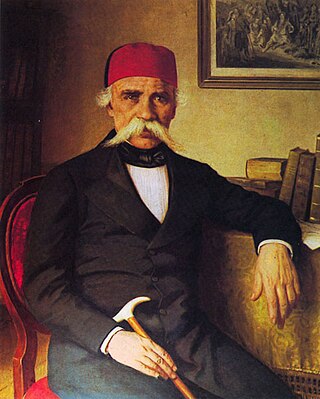
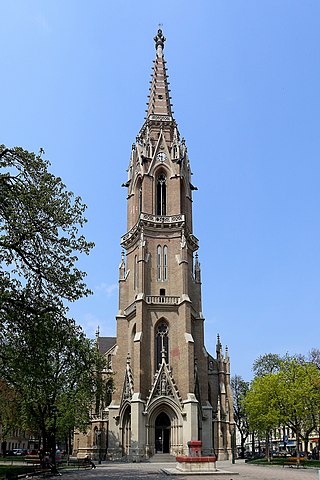
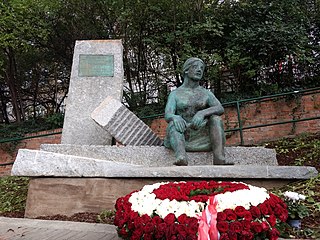
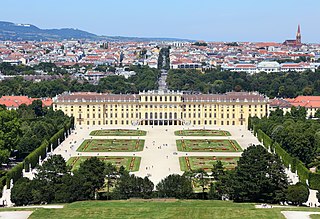

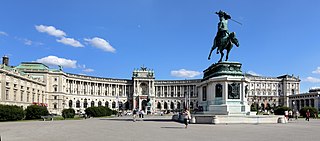
.jpg)
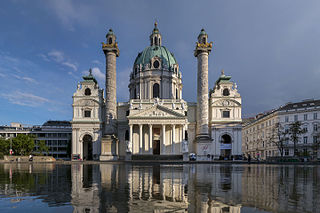
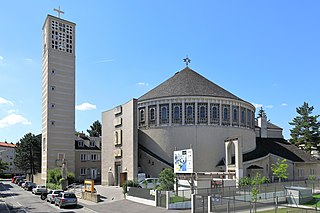
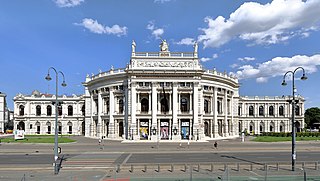
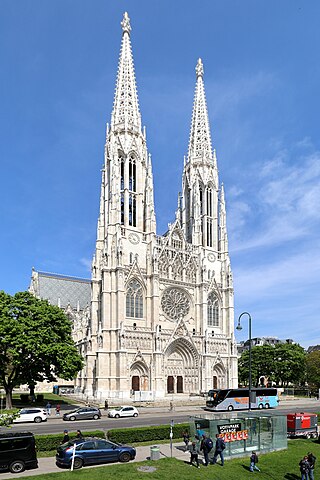
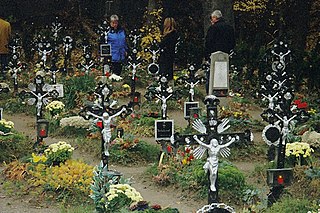
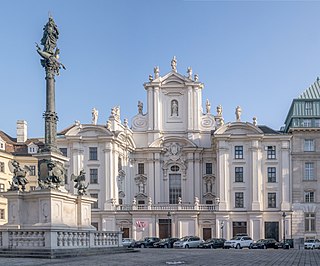
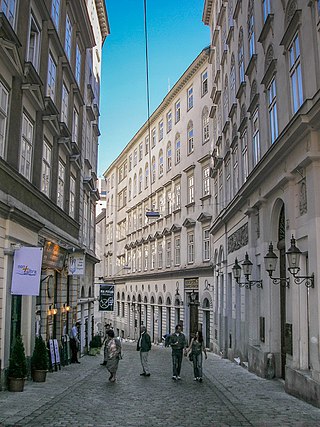
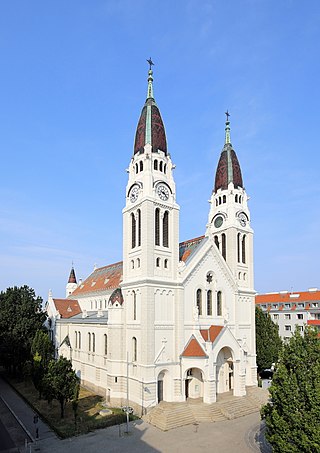
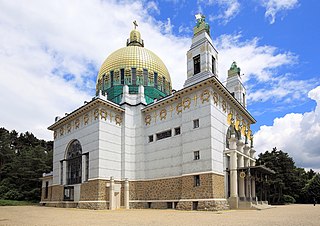
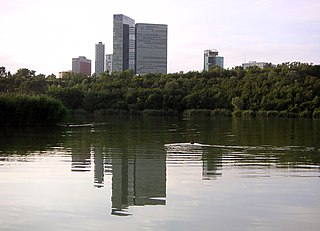
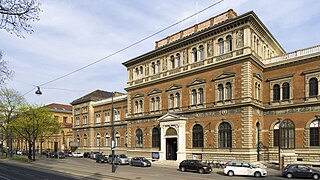
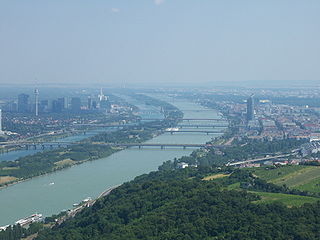
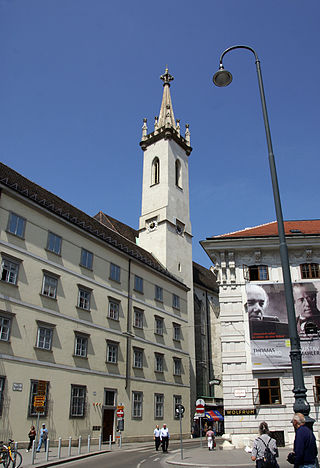
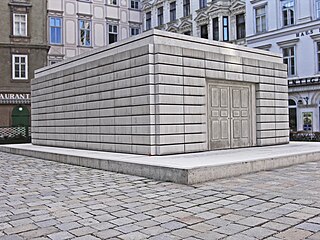
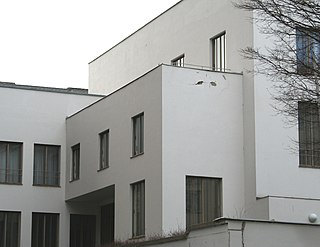
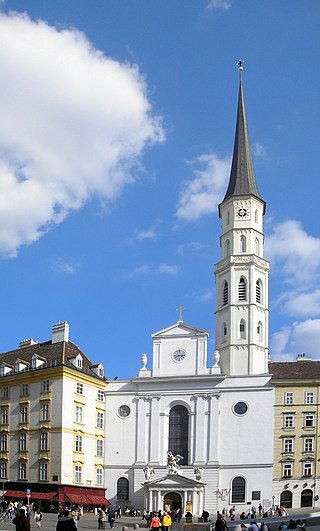
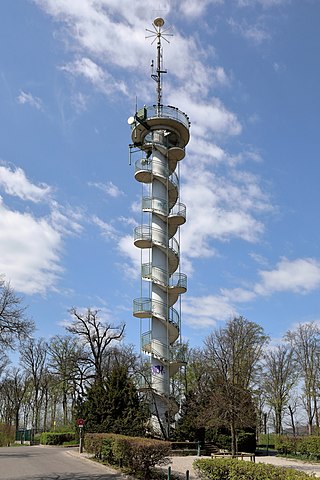
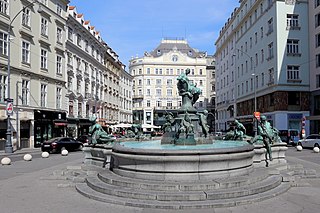
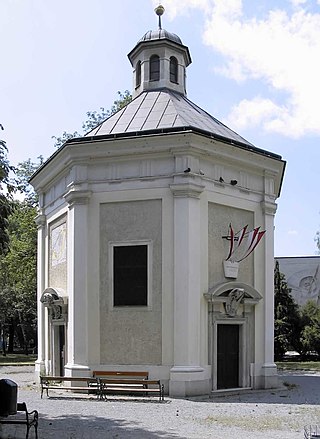
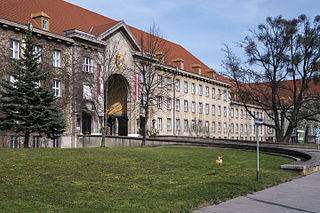
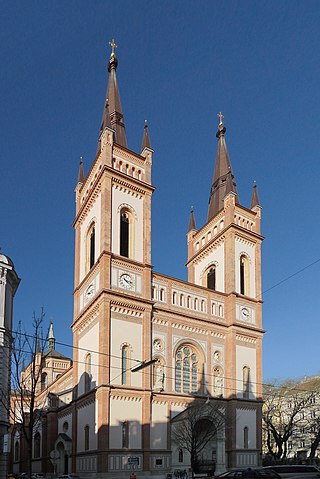

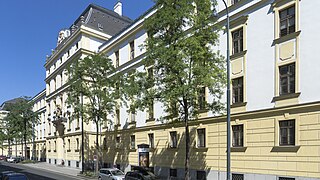
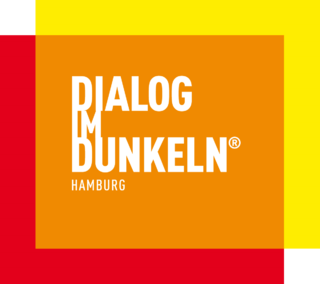
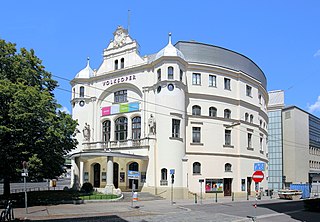
.jpg)



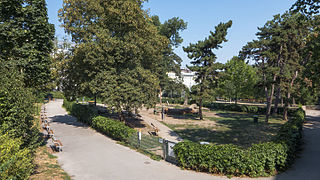
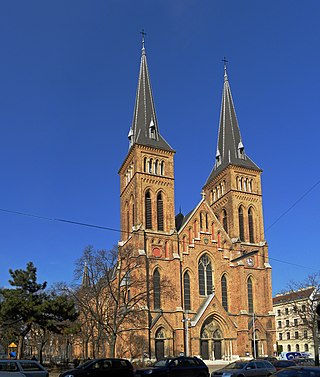

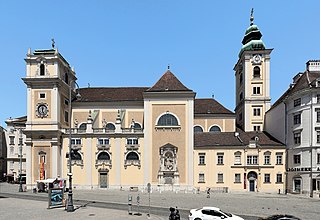
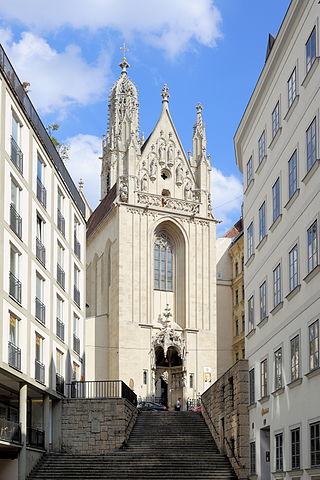
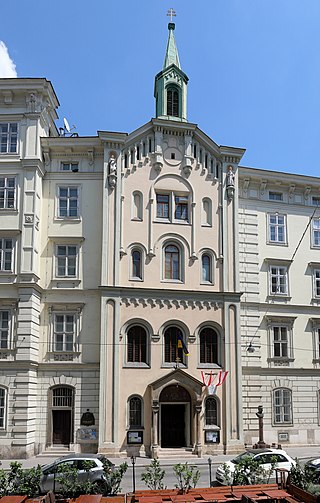


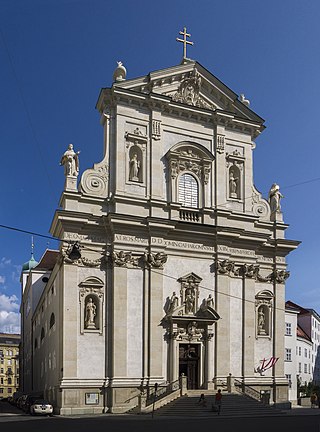

.jpg)
